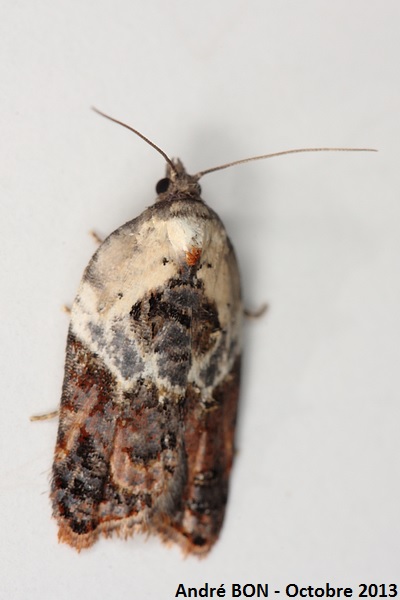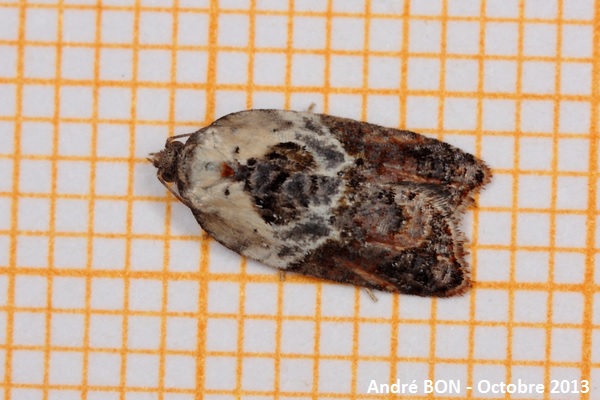

| Garden Rose Tortrix (Acleris variegana (Denis & Schiffermüller, 1775)) |


|
|
Scientific name: Acleris variegana (Denis & Schiffermüller, 1775) Common name: Garden Rose Tortrix French name: Tordeuse chagrinée Order: Lepidoptera Suborder: Microlepidoptera Family: Tortricidae Subfamily: Tortricinae Wingspan: 14-19 mm. Biotope: Various habitats, orchards, parks and gardens, etc. Geographic area: Palearctic region, from western Europe to China, North Africa. Introduced to North America in the 1920's. Flight time: July to October. Number of generations : 1 in Europe, 2 in North America. Caterpillar: Yellowish green or light green. The head and the prothoracic shield are greenish brown or yellowish brown. Host plant: Many plants, in particular those of the Rosaceae family including those of the Prunus genus, fruit and ornamental trees, and those of the Rosa genus, rose trees. |
The Garden Rose Tortrix is a very variable species. The most common form has a whitish first basal fore wings' half with greyish markings and one blackish brown triangular patch on the inner edge. The patches of both wings merge into a single central patch when the moth is landed. The distal half is purple brown, reddish brown or blackish brown with an orange brown fringe. This area may be marked with a darker spot but also sometimes with a whitish spot of the same colour as the base of the wings. The hind wings are grey. The legs are ringed. There are other forms with yellowish brown fore wings. Garden Rose Tortrix moths are active during the night and they are attracted to light. |
| [To know more about the Garden Rose Tortrix] [Next picture] [Top] |

|
This Garden Rose Tortrix must have been attracted to light and is entered into the house. |
| [To know more about the Garden Rose Tortrix] [Previous picture] [Top] |

|
This is certainly the same specimen as the one observed two days before. It has been very cooperative to land on a graph paper sheet so that I am able to measure its exact size. |